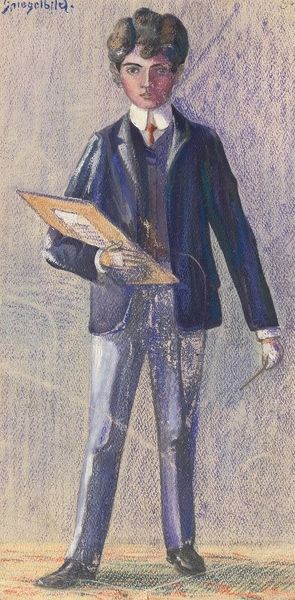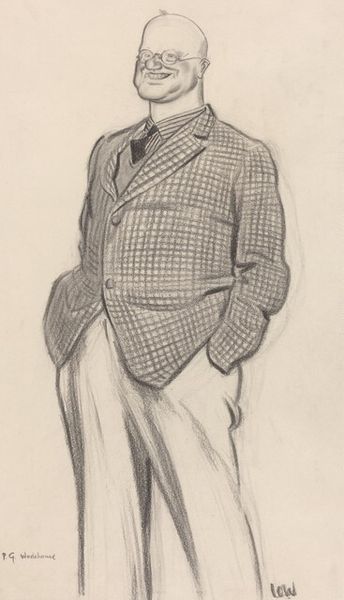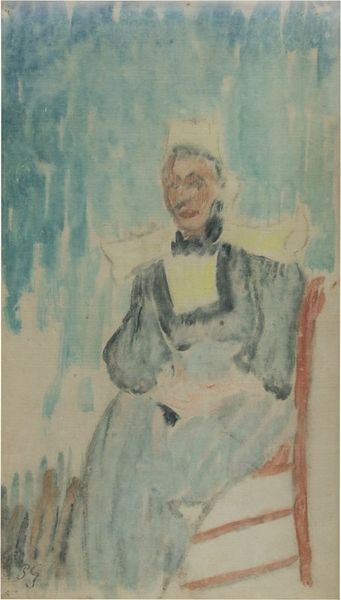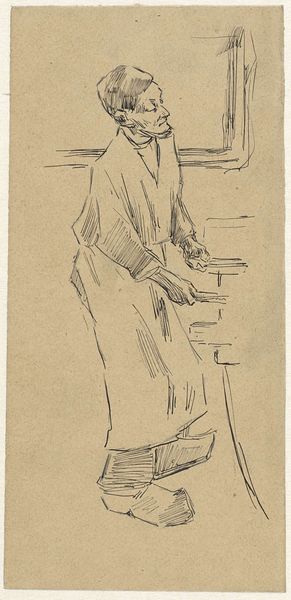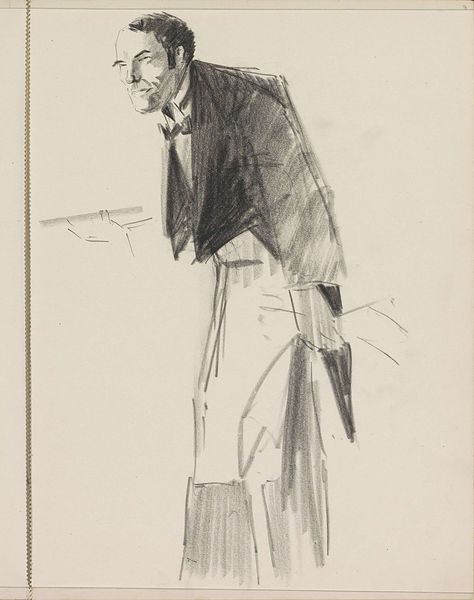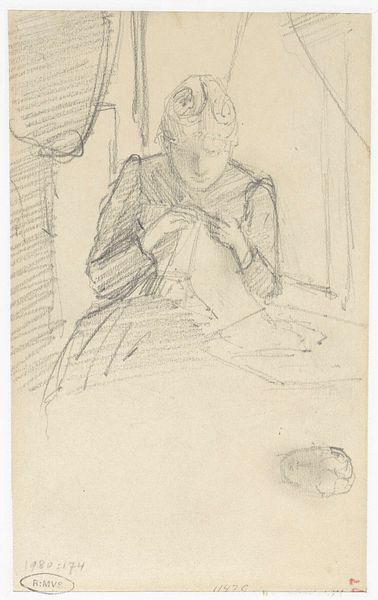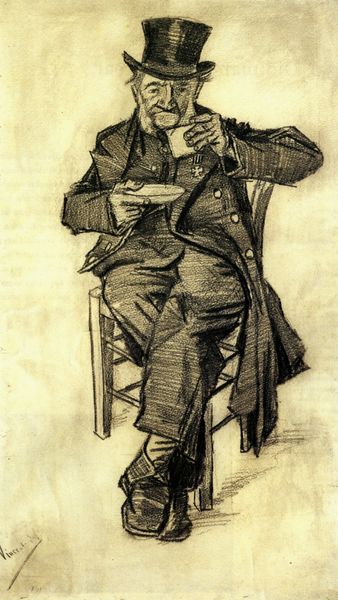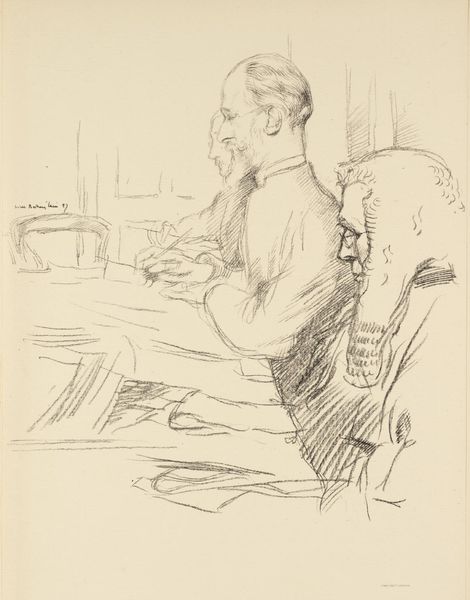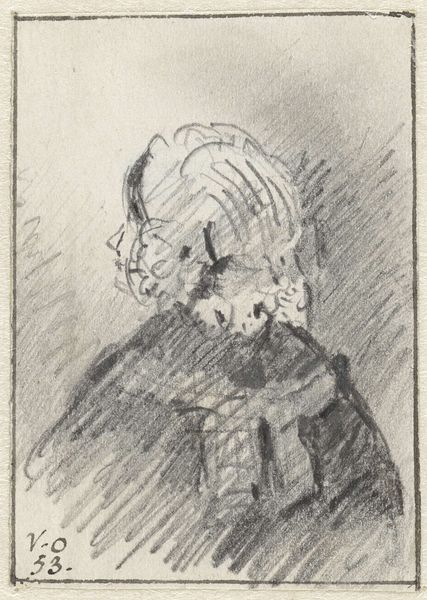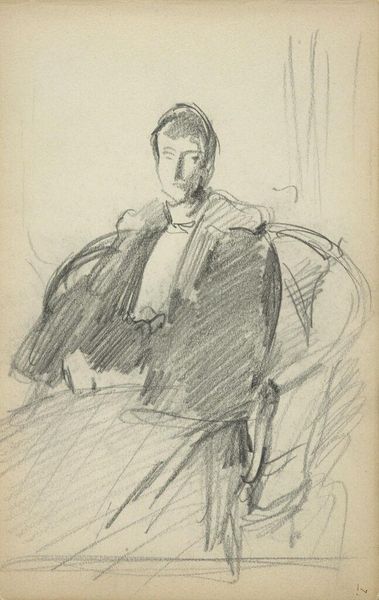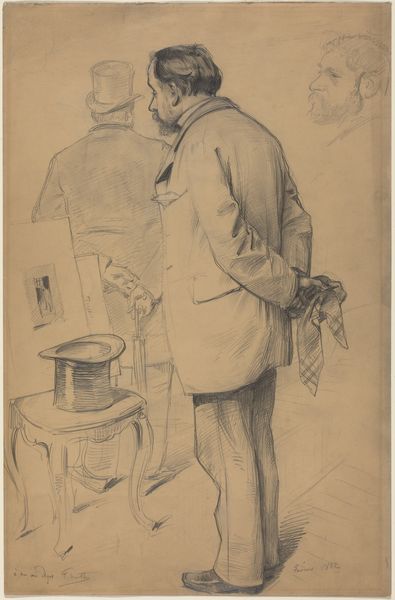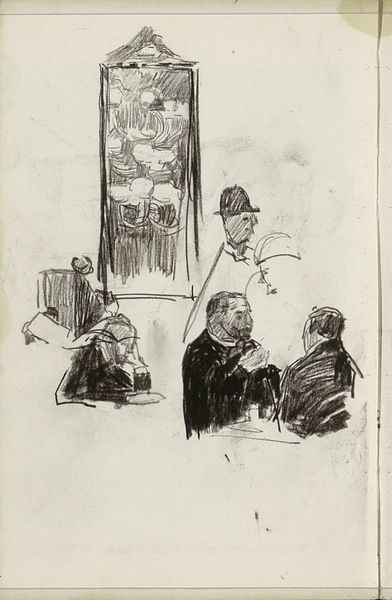
drawing, impasto, pencil, charcoal
#
drawing
#
figurative
#
pencil sketch
#
charcoal drawing
#
figuration
#
impasto
#
pencil drawing
#
pencil
#
portrait drawing
#
genre-painting
#
charcoal
#
realism
Copyright: Public Domain: Artvee
Editor: This is Van Gogh's "Man Polishing a Boot," created in 1882 using pencil and charcoal. It's such a gritty and intimate portrayal. The sketch captures a humble scene, focusing on the quiet dignity of labor. What do you see in this piece beyond just the surface? Curator: Well, considering Van Gogh's socio-political consciousness, it’s fascinating to examine this through the lens of class and representation. How does this image, made during a period of intense social upheaval, participate in the visual dialogue around the working class? Consider, too, the institutions shaping the image – was this meant for public consumption? Editor: That’s interesting. I hadn’t considered the intended audience. Was he trying to make a statement? Curator: Precisely! Think about the Realist movement at the time. Artists were striving to depict everyday life accurately, but their works were also loaded with political implications. Van Gogh, even in his early work, was interested in the plight of the working class. He’s not just representing; he’s imbuing this man with a sense of humanity. Where does this placement within Realism take your initial impressions? Editor: It reframes it. I initially saw the drawing as just a study of form and light, but understanding the context makes it feel much more charged and deliberate. He's not just polishing a boot; he is existing in this world of labor. Curator: Exactly! And that awareness alters our viewing experience. The image isn't merely representational, it engages us to consider social disparities and the artist's own socio-political position. The image asks a quiet, complex question about the individual. Editor: It's amazing how much deeper our understanding can become with just a little historical context. I will never view art the same. Curator: And hopefully, this provides another framework from which to analyze his further, more evolved pieces!
Comments
No comments
Be the first to comment and join the conversation on the ultimate creative platform.
